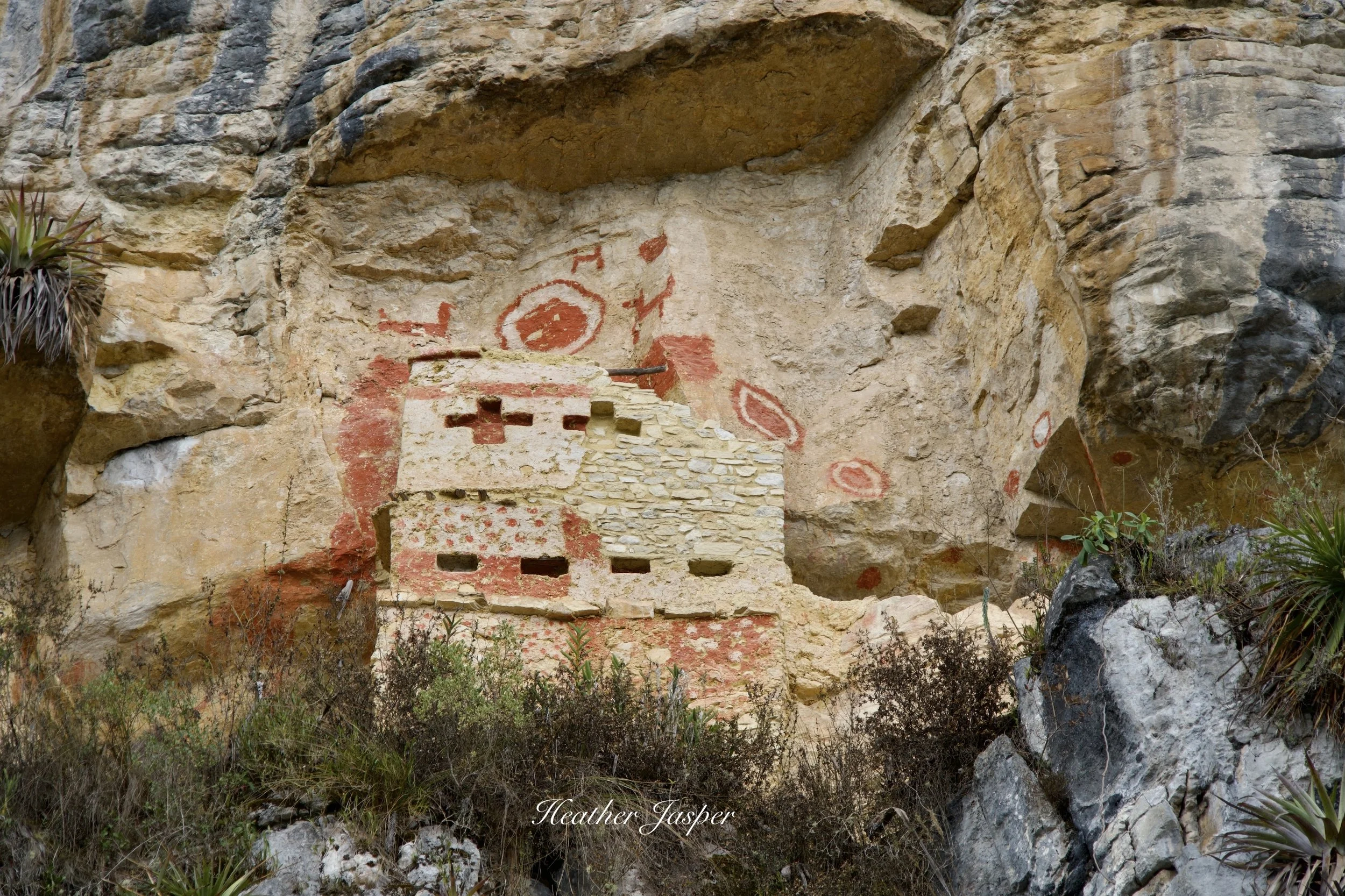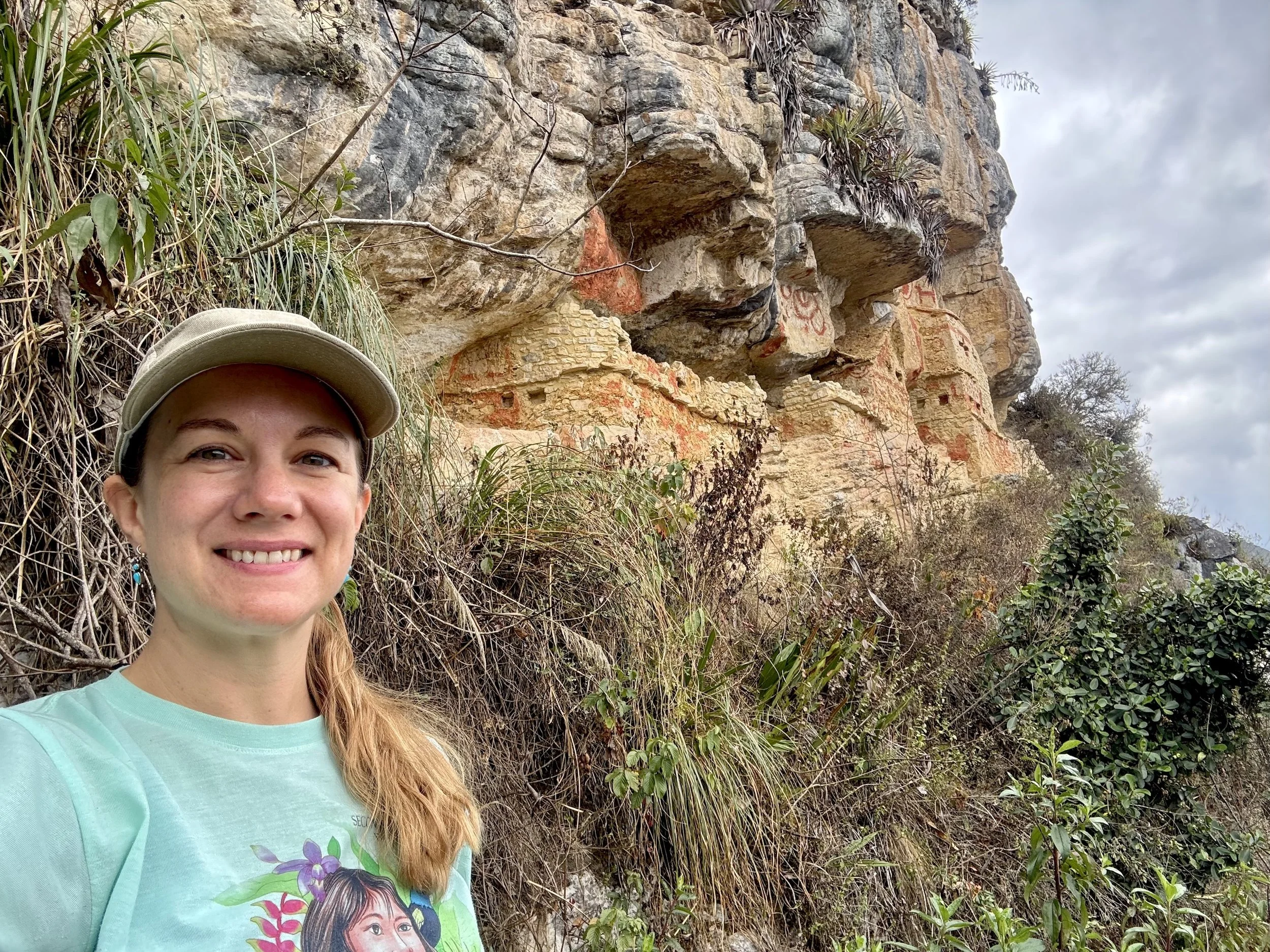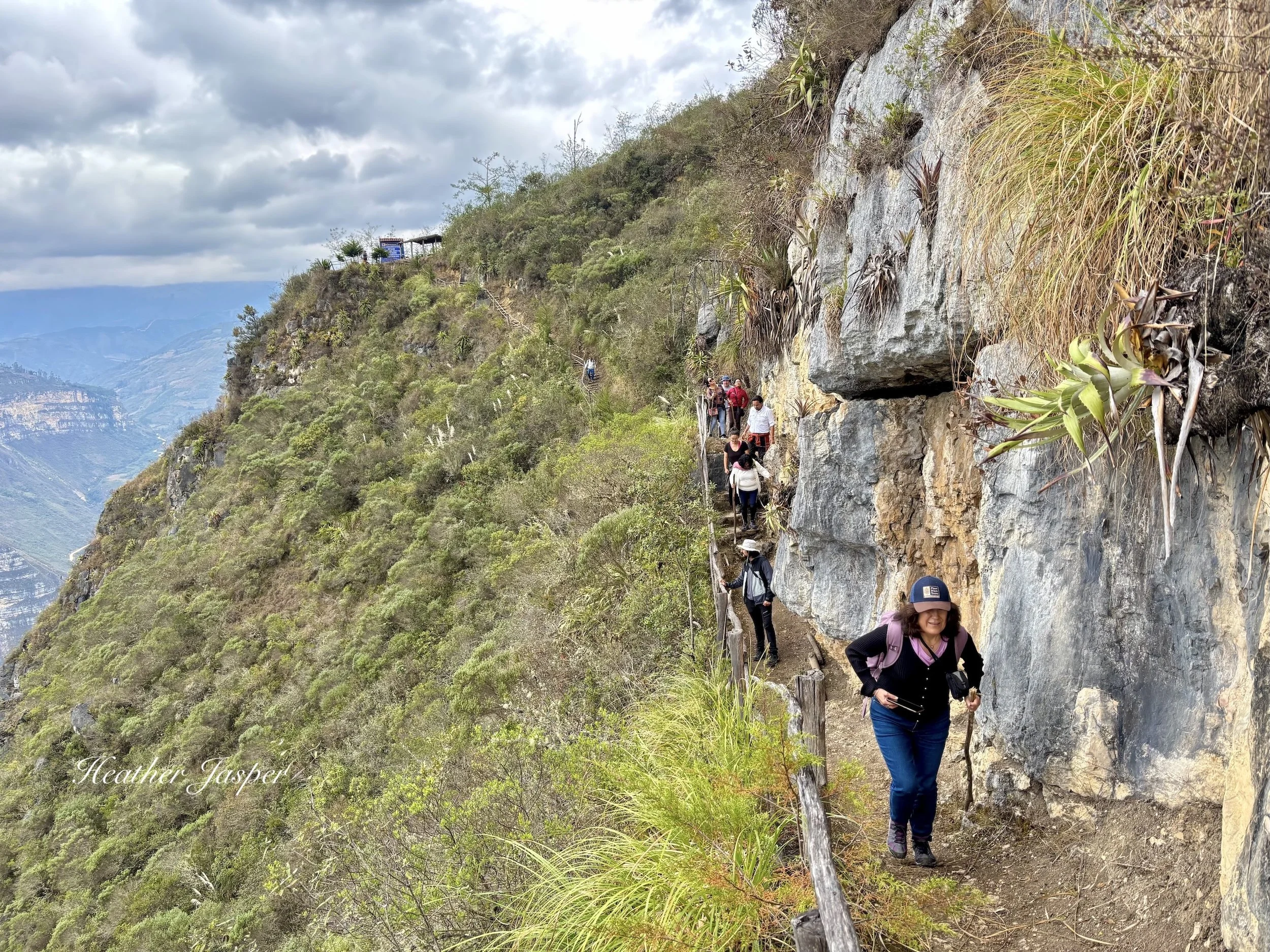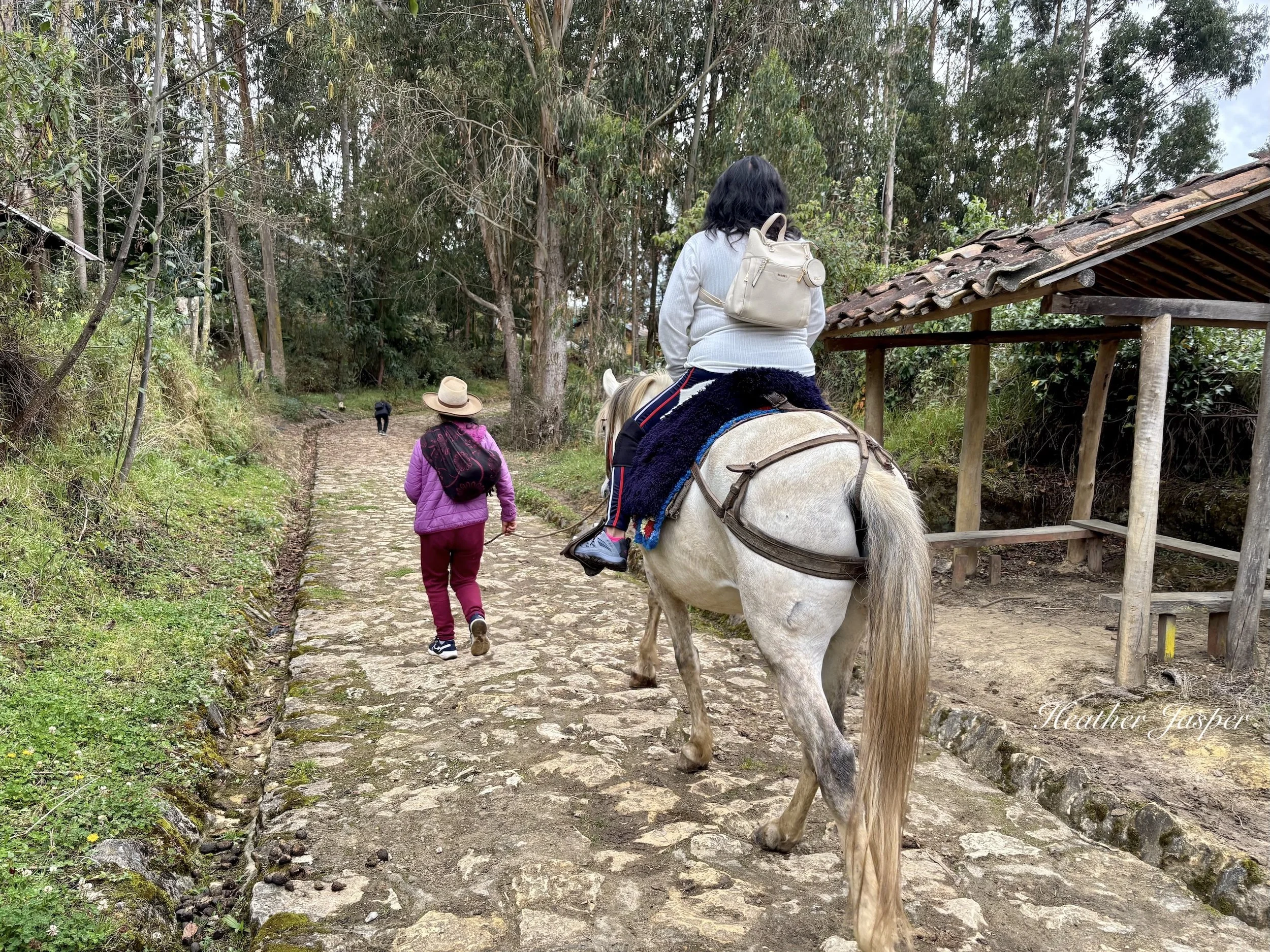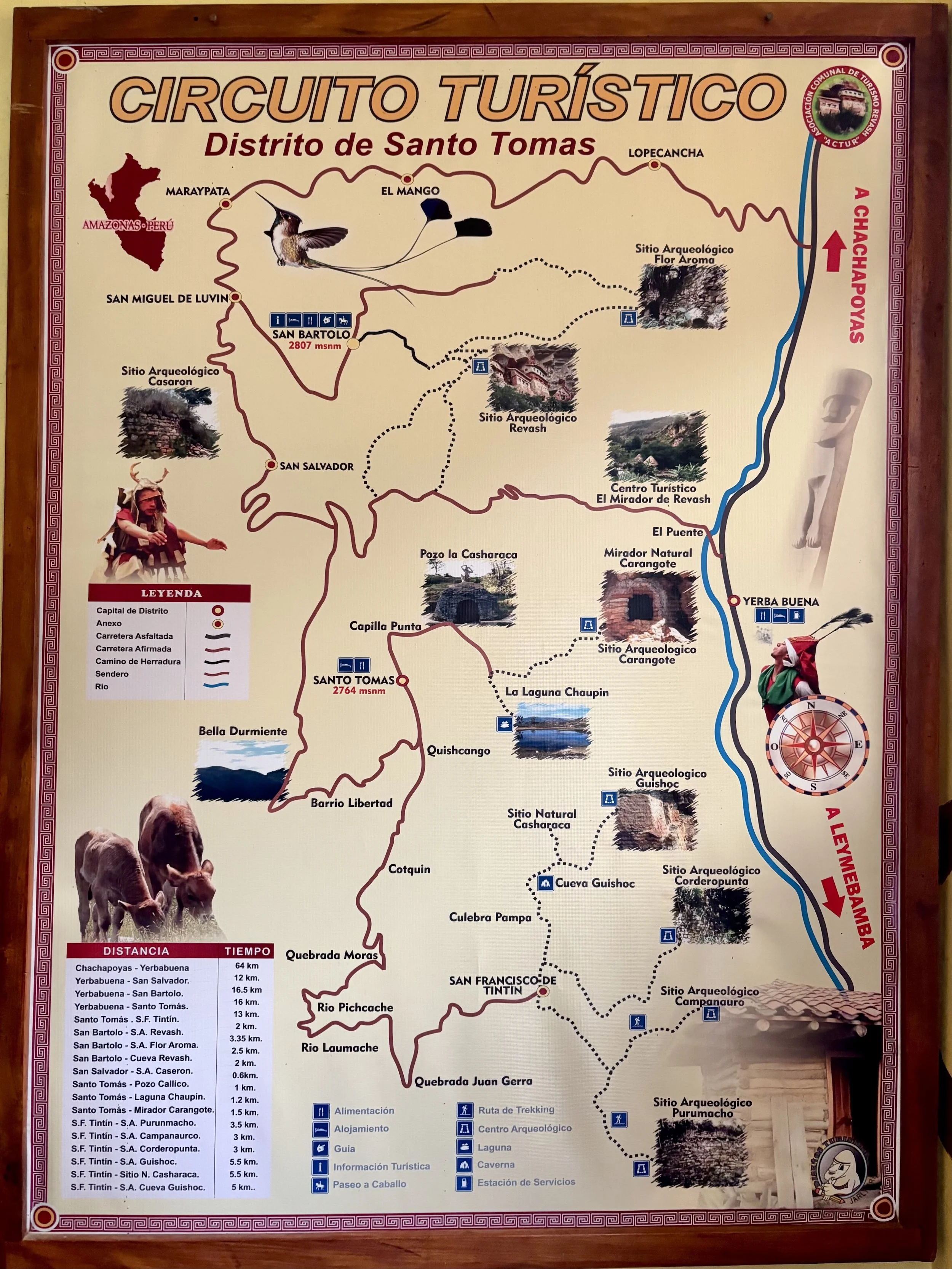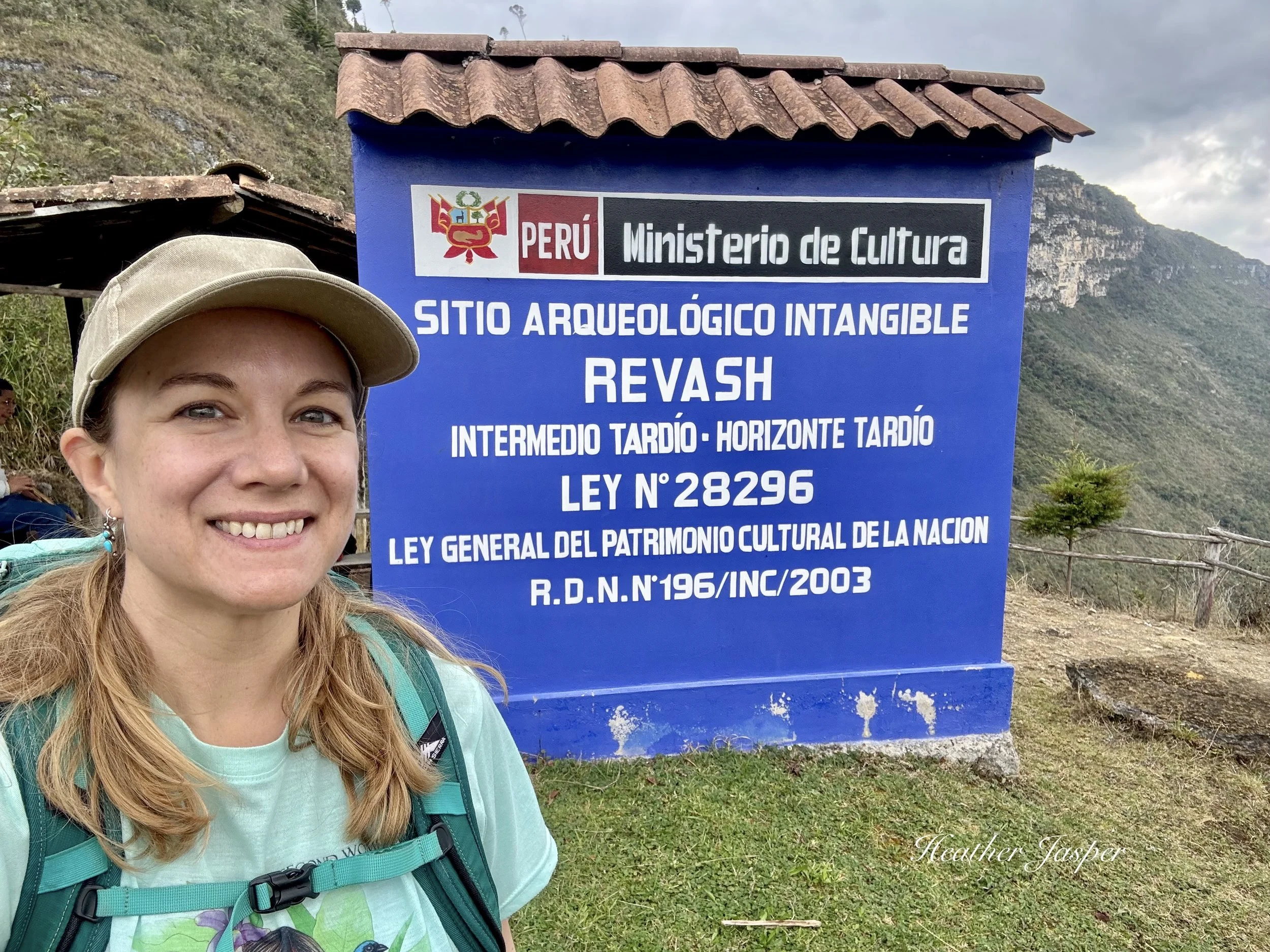Revash Mausoleums
This is one of the larger mausoleums, which all together cover about 200 square meters.
One of the most fascinating tours near Chachapoyas is to Revash.
These stone and adobe houses were built under overhanging limestone cliffs, where they are protected from the weather. According to Arqueología del Perú, they were used to house the Chachapoya’s elite after death from 1100-1300CE. The Chachapoya ruled Peru’s northern cloud forests from about 500CE to when the Inca conquered them in the 1470s.
There is very little information about them and even after visiting I had to do more research online. Even the World Monuments Fund doesn’t have much information, probably because of the looting explained below.
Each little house is a mausoleum, where many mummy bundles were left for what their descendants thought was eternity. Unfortunately, at some point between the Spanish invasion and the 1990s, the mausoleums were looted. Archeologists found some bones and broken pottery, but no intact mummies and none of the funerary offerings that were surely sealed in the tombs.
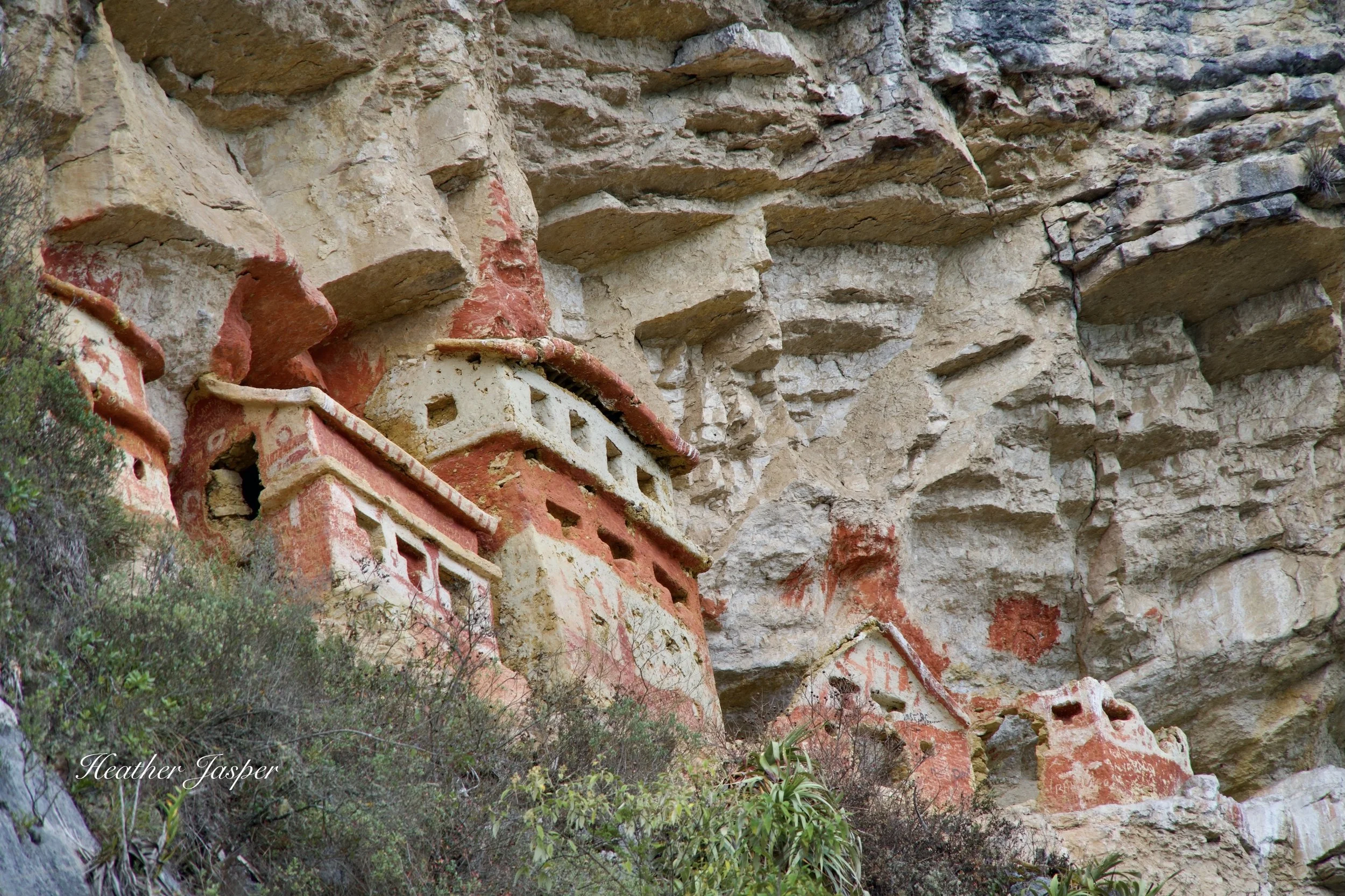
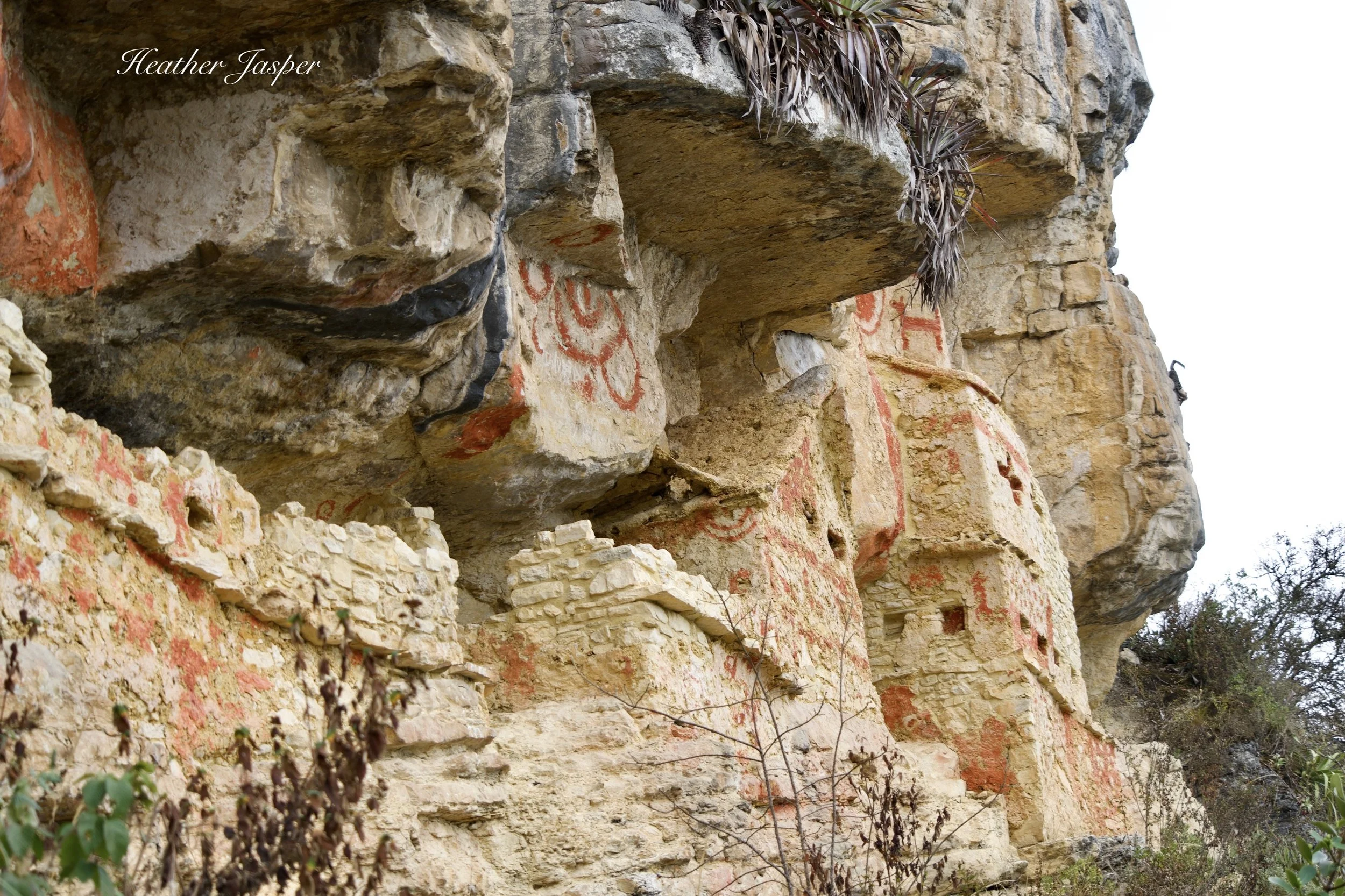
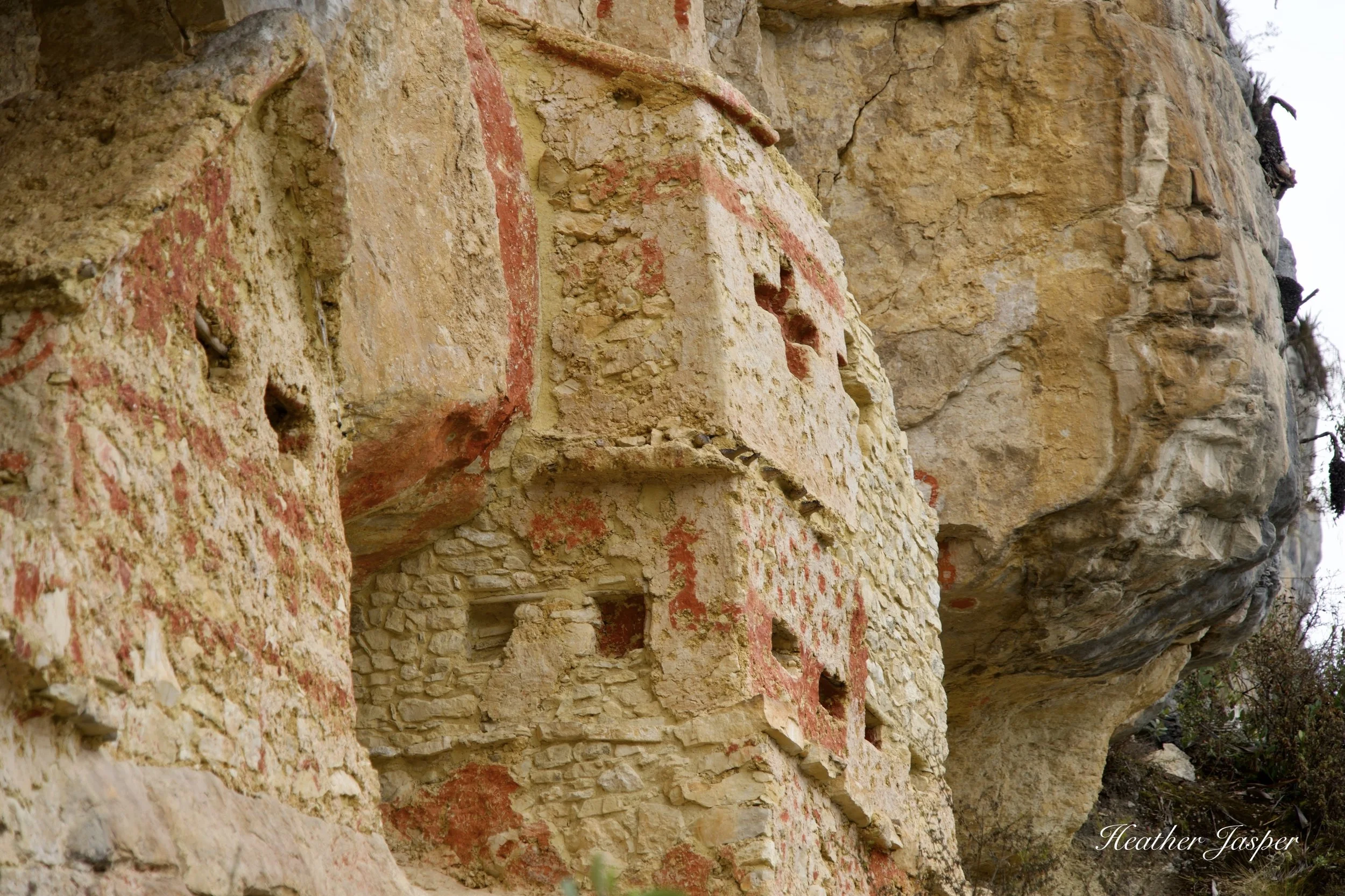
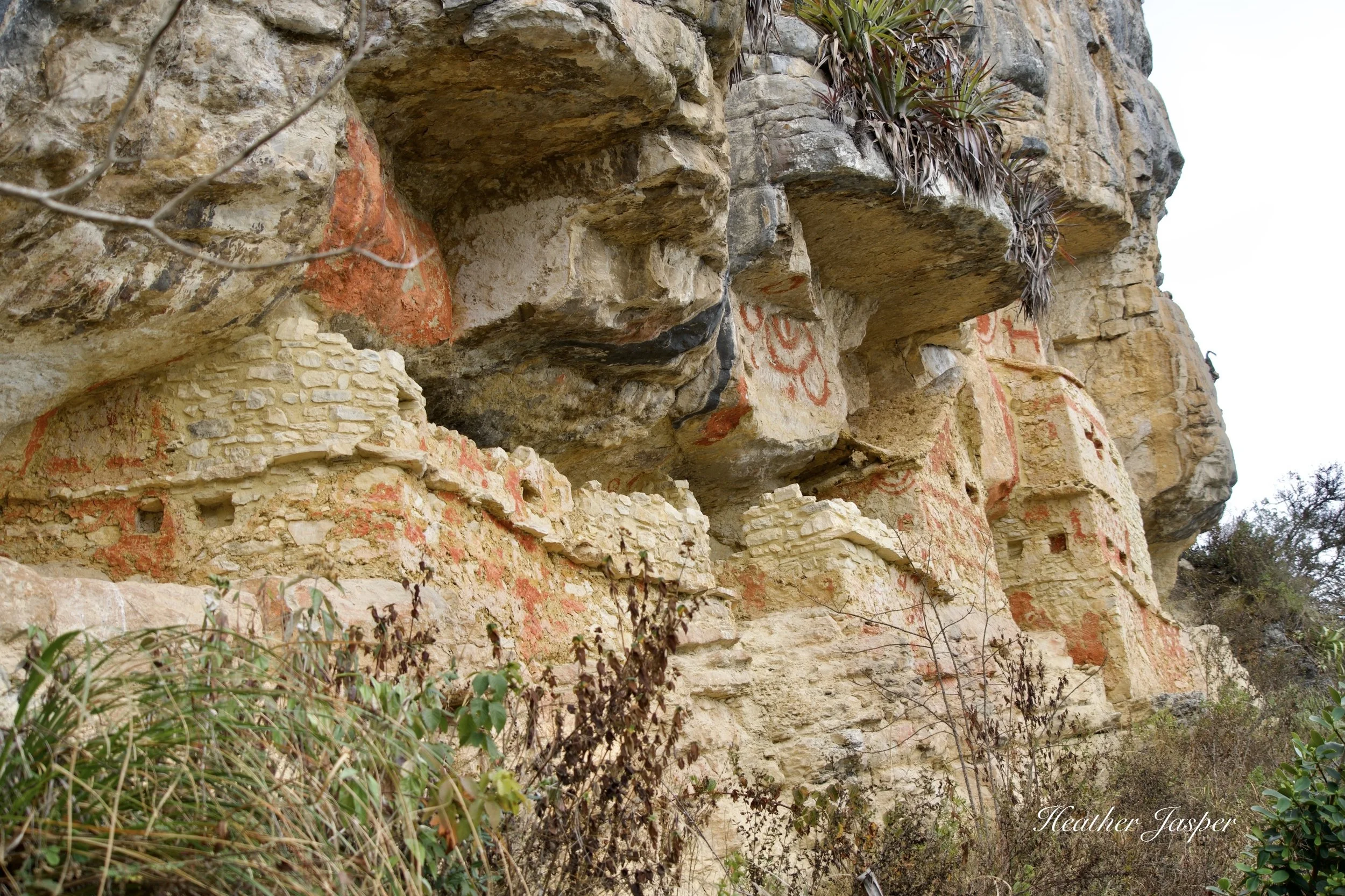
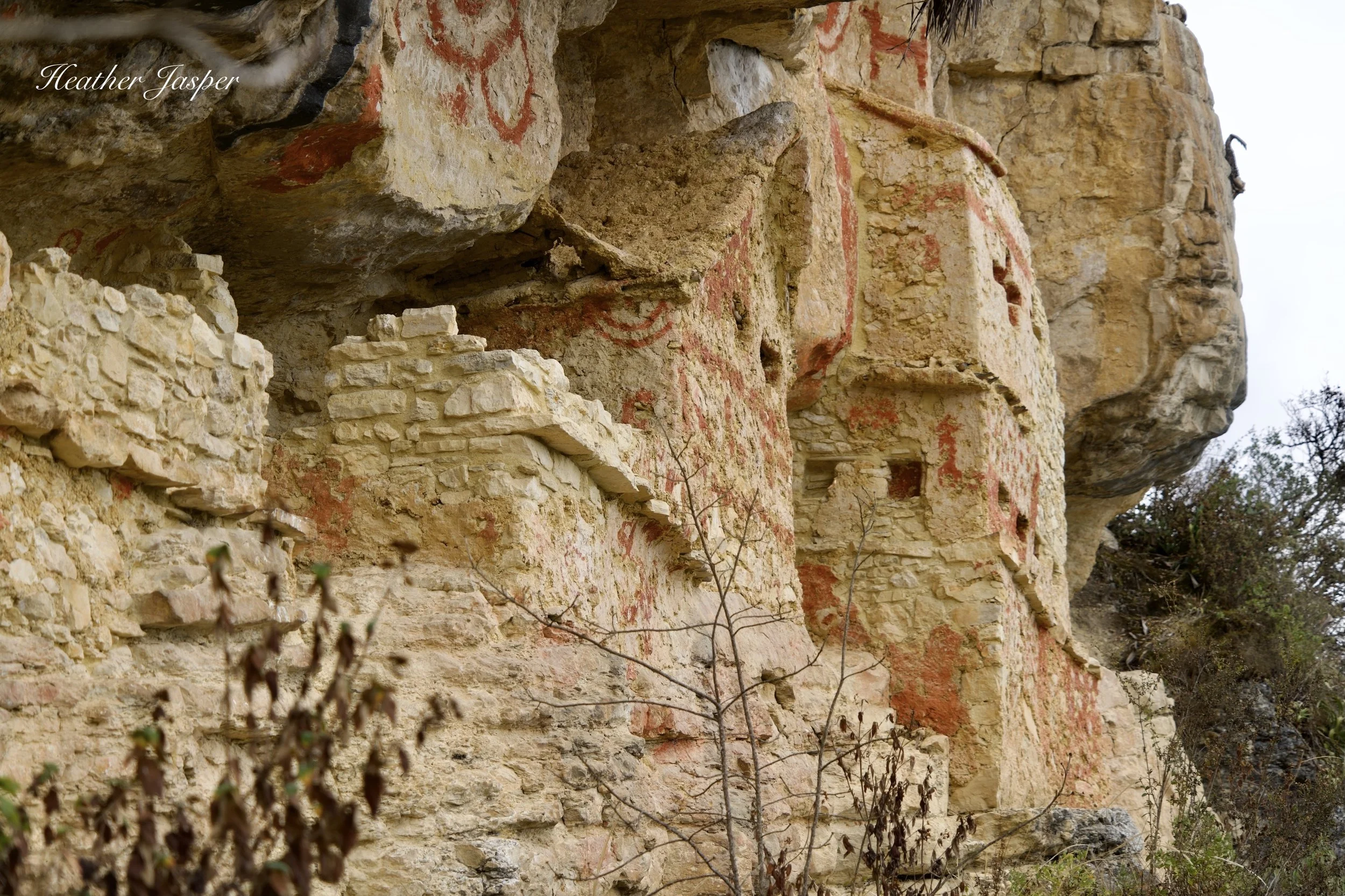
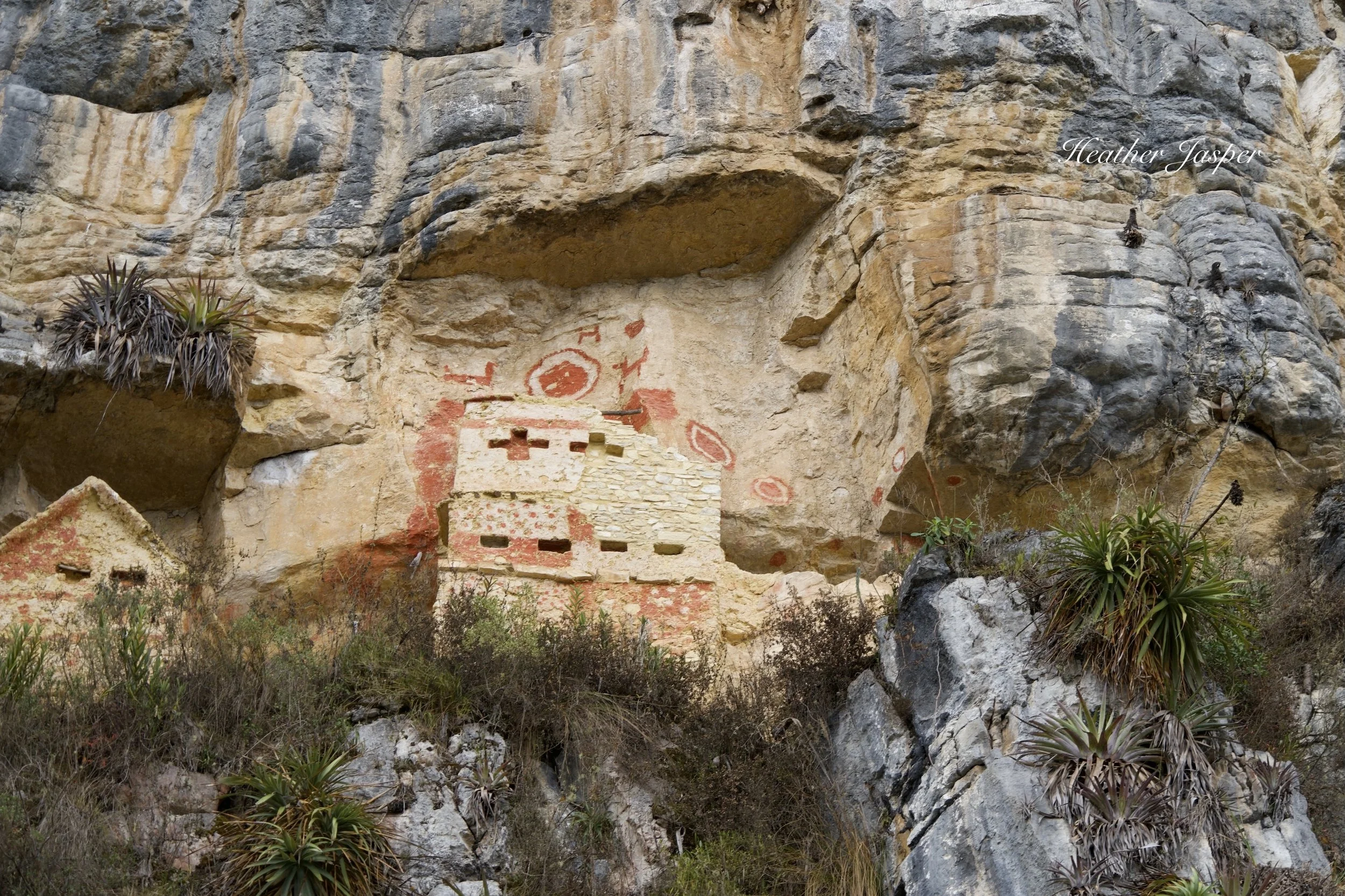
What’s left are the mausoleum-houses.
Each one was built with a door on the side, not facing out over the valley. They were painted with red pigment in circular patterns, with crosses and animal figures like llamas. The crosses reminded me of the ones that I saw at Cumbe Mayo, made by the Caxamarca people about 2,000 years ago.
The mausoleums are unique, even for the Chachapoya.
The Chachapoya were very different from other pre-Inca Andean cultures in life and death. They lived in round houses and most of their tombs, called chullpas, were also round. However, the Revash structures are square, built with the cliff as the back wall of each house. The burial chambers at Revash weren’t tombs for individuals, but mausoleums where many mummies were buried together. The Chachapoya made mummies very differently from other Andean cultures, which you can read about in my Leymebamba blog.
I’m glad people can’t walk through the mausoleums anymore. This is close enough.
Keeping a respectful distance.
The trail to the mausoleums used to go right up to them and tourists could walk through the standing walls that survived the looters. Unfortunately, too many people further desecrated the site with graffiti and now the trail up to the structures has been blocked. You can still get fairly close, as you can see in my photos.
The last part of the trail to the Revash mausoleums goes along the base of the cliff.
You can ride a horse most of the way from the village to the Revash Mausoleums.
This is an easy walk but a long, bumpy drive.
When you arrive in the village of San Tomás, you can walk the first half hour to the mausoleums by foot or take a horse. It’s a wide trail, paved with stone and has steps on the steeper parts. Either way, you have to walk the last ten minutes to the view point.
Visiting the Revash mausoleums is usually paired with a trip to the Leymebamba Museum.
More to see than the mausoleums
If you are traveling independently, rather than with a tour, spend a few days in Santo Tomás or Yerba Buena to see all the sites in the area.
If you are going to Kuélap, take the time to also visit Revash and Leymebamba.
Planning a trip to Peru?
Download my travel guide app! It has everything you need to plan a wonderful trip!

